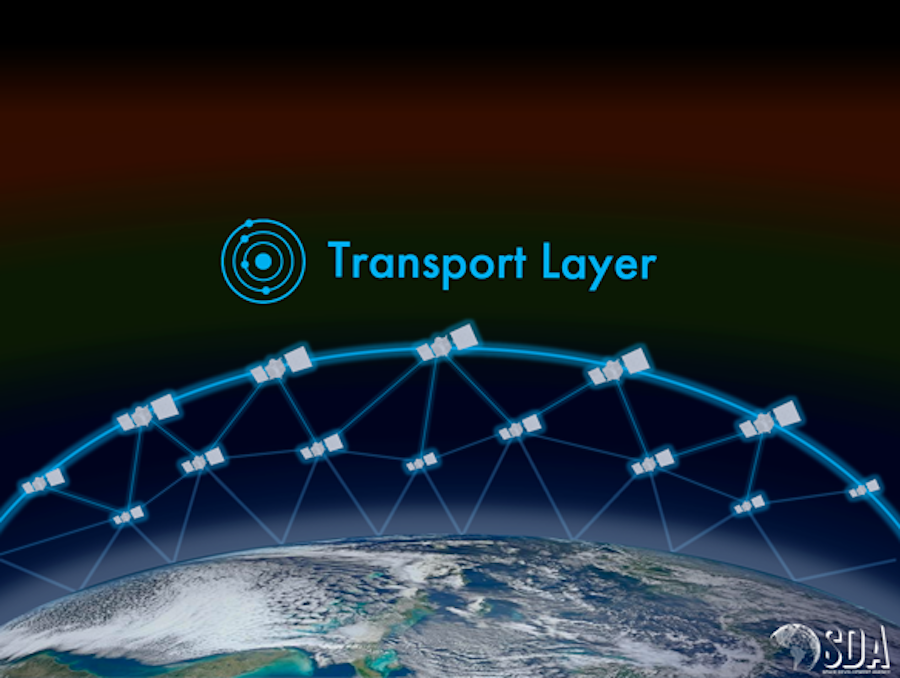Products You May Like
Derek Tournear: ‘I’m really interested in industry feedback when they see our acquisition strategy’
WASHINGTON — The Pentagon’s Space Development Agency is considering buying its next 150 satellites from three different vendors, but that could change after the agency evaluates companies’ bids, SDA director Derek Tournear said April 14.
Speaking at the Washington Space Business Roundtable, Tournear said a request for proposals will be issued in August for the agency’s Transport Layer Tranche 1 — a network of hundreds of communications satellites in low Earth orbit projected to start launching in late 2024.
The request will be for 150 satellites but SDA has not yet decided how that order will be divvied up. “There is probably three awards for those 150 satellites, but we’re not wed to three,” Tournear said. “Three is not a magic number. I’m really interested in industry feedback when they see our acquisition strategy.”
The 150 satellites will be deployed at altitudes of about 1,000 kilometers in six planes. SDA might ask vendors to bid for each of the six planes, said Tournear. “But this could all change, there are still internal debates.” How companies price each plane, for example, would help determine how many awards, he said. “The awards could be anywhere from one to six performers if we bought a plane at a time.”
A key factor is whether vendors can make their satellites with open standards so they can talk to those from other manufactures, Tournear said. “That’s a critical piece. The only way this works is in an open architecture where I can have people bid and win a certain fraction of the market share, if we do this in a way that has open standards and an open architecture.”
The specific requirements for interoperability and satellite crosslinks will be issued soon, Tournear said.
SDA expects its Tranche 1 satellites to cost less than the average $14.1 million that it paid for Tranche 0 satellites, Tournear said. He noted that people in the Pentagon continue to be surprised that SDA is able to buy satellites at such low prices compared to traditional military satellites that cost hundreds of millions of dollars each.
After a recent request for information SDA sent to vendors, “responses came back actually at significantly less than $14.1 million,” Tournear said. “That just shows commoditization has burned down the price of the satellites, and that really enables proliferation.”
Options for launch vehicles
The procurement of launch services for the 150 satellites is another issue SDA is debating. The agency has asked the Space Force to estimate what it would cost to launch SDA’s satellites on United Launch Alliance or SpaceX rockets under the National Security Space Launch program. “It’s unclear if that’s feasible, given our budget constraints,” Tournear said.
SDA awarded SpaceX a $150 million contract to launch its 28 Tranche 0 satellites, but that was a commercial procurement, not an NSSL award.
“With hundreds of the satellites you can solve that problem a lot of different ways,” said Tournear.
A larger launch vehicle works for the initial deployments of satellites but SDA believes it will need other launch options as more satellites are added in future years.
“There’s a couple different debates going on within the agency and within the agency and the Space Force on how to handle that,” he said.
After Tranche 1 is in orbit, for example, SDA will want to intersperse new satellites with existing ones as older ones are decommissioned, he. said. “I don’t want to populate a plane at a time, I really want to intersperse them,” he added. “I don’t want to launch an entire plane. So that sets us up into a different class of launch vehicle.”
Locations for satellite ops
SDA is headquartered at the Pentagon, but its satellites will be flown from two major military bases: Grand Forks Air Force Base in North Dakota; and the Army’s Redstone Arsenal in Alabama.
“That’s where we’re planning to have our mission operations center for Tranche 1 and beyond,” said Tournear.
Grand Forks was selected for its expertise in tactical aviation and drone operations, he said. Redstone was picked because the Army will be one of the primary users of SDA’s satellites not just for communications but for beyond line of sight targeting. “So we want to make sure we’re tied in with those groups,” said Tournear.
